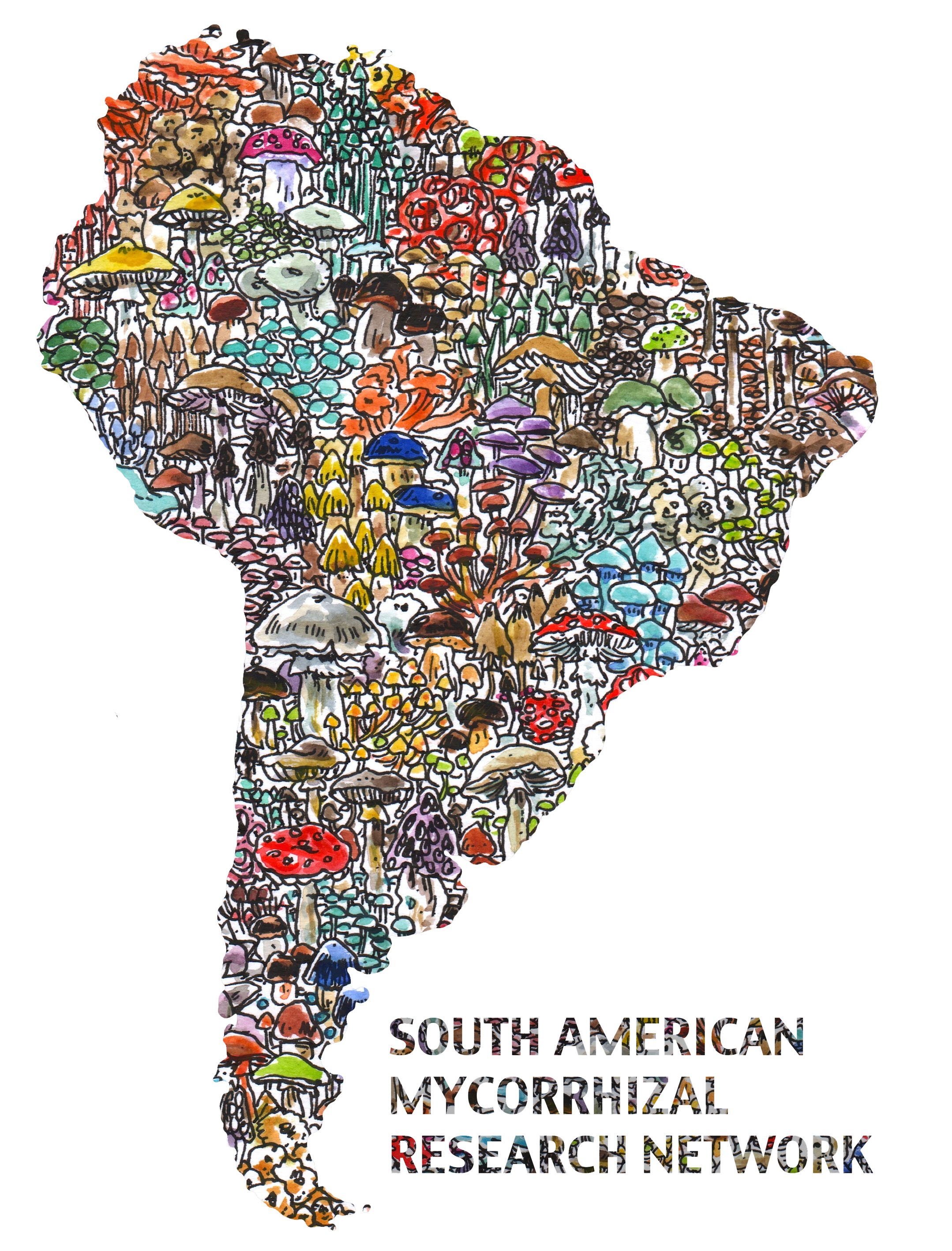What we are reading in April, 2018
By: Adriana Corrales. Profesora asistente, Facultad de Ciencias Naturales y Matemáticas, Universidad del Rosario. Bogotá, Colombia.
Tropical forests are known for their high diversity of plants, animals and microorganisms. Although the diversity of most groups increases closer to the equator, root symbiotic ectomycorrhizal (ECM) fungi generally do not follow this trend. This pattern is putatively driven by a lower abundance and diversity of host plants in the tropics.
Corrales et al. (2018) make an extensive review of the tropical ECM literature including an historical overview of the study of tropical ECM, biogeography, diversity patterns and ecosystem roles of plants and fungi lineages. They highlight several emerging patterns.
Tropical forest might not be as poor in ECM plant species as previously believed. The authors found direct evidence for ECM associations in 283 plant species from 73 genera in 18 families. Africa is the continent with the highest reported diversity of ECM plant species (120 species). One ECM plant family is dominant in Africa (Fabaceae), Asia (Dipterocarpaceae) and Australia (Myrtaceae), while Central and South America seem to have a more even distribution of ECM plant families. The mycorrhizal status of many tropical plant lineages is still unknown so the number of tropical ECM plant species is expected to increase.

Tropical ECM associations are believed to play critical roles in maintaining tropical monodominant forests. Recent research has found contrasting evidence about the importance of ECM networks (mycelial connections between plants) in maintaining tropical monodominance and it is a hot topic to discuss! However, mechanisms associated with preferential access to organic nutrients like nitrogen and phosphorus by ECM fungi and plants are gaining a lot of support.
Regarding the biogeography of ECM fungal lineages, surveys of ECM root tips and fungal fruiting bodies have found that members of the /amanita, /russula–lactarius and / boletus ECM fungal lineages are highly speciose and widespread across the tropics. Root and soil-based studies found that the /tomentella–thelephora and /sebacina lineages also are diverse and often dominant, but these groups remain undersampled due to their inconspicuous fruiting bodies. Other lineages are apparently absent or species-poor in tropical ecosystems, including /albatrellus, /endogone1, /hygrophorus, /paxillus–gyrodon, /piloderma, /suillus–rhizopogon and /tricholoma (Tedersoo et al., 2010a).
The beta diversity patterns of tropical ECM fungi are complex given that ECM-dominated forests are often patchily distributed within a larger forest matrix of AM trees. In addition, in tropical ecosystems, climate and vegetation are often spatially autocorrelated, making it challenging to separate environmental from purely distance effects (Ettema & Wardle, 2002; Bahram et al., 2013). Besides geographical distance, factors such as soil fertility, soil vertical stratification, altitude, host specificity, coevolution of fungi with their hosts, and forest successional stage are important to explain the strong distance decay and high variation in tropical ECM fungal communities.
In tropical forests, functional roles of ECM associations are poorly known and studies in different ecosystems have showed contrasting results. Recent research in ECM-dominated systems has demonstrated that ECM fungi play an important role in carbon and N cycling. Soils in ECM-dominated forests have a higher C content than soils in AM-dominated forests, but the mechanisms driving this C accumulation remain mostly untested in tropical forests. One hypothesis is that ECM plants produce more litter with a higher C : N ratio (Jordan, 1985) however, ECM fungi could alter the C cycle by slowing litter decomposition via the ‘Gadgil effect’ (Fernandez and Kennedy, 2015). The role of tropical ECM in organic P and N uptake and the influence of species specific fungal functional traits in nutrient cycles is also largely understudied with a lot of potential for future research.
The authors conclude that in many tropical ECM-dominated systems fungal communities have not been sufficiently studied and patterns of species composition and richness are still unknown. Efforts to sequence local herbarium specimens in tropical countries to enrich international databases will greatly help to clarify the trophic modes of the many OTUs that are recovered with metagenomic sequencing. Furthermore, studies are needed to unveil the functional roles of tropical ECM fungi in nutrient cycling and to document the functional traits of different tropical ECM fungi.
The last 25 years of research in tropical ECM have shown that this is a hot topic of research and it is an exciting time to study tropical ECM associations!
References
Corrales A, Henkel WT, Smith ME. 2018. Ectomycorrhizal associations in the tropics – biogeography, diversity patterns and ecosystem roles. New Phytologist doi: 10.1111/nph.15151. https://nph.onlinelibrary.wiley.com/doi/10.1111/nph.15151
Tedersoo L, May TW, Smith ME. 2010a. Ectomycorrhizal lifestyle in fungi: global diversity, distribution, and evolution of phylogenetic lineages. Mycorrhiza 20: 217–263.
Ettema CH, Wardle DA. 2002. Spatial soil ecology. Trends in Ecology & Evolution 17: 177–183.
Bahram M, Kõljalg U, Courty PE, Di”edhiou AG, Kjøller R, Pølme S, Ryberg M, Veldre V, Tedersoo L, Koljalg U et al. 2013. The distance decay of similarity in communities of ectomycorrhizal fungi in different ecosystems and scales. Journal of Ecology 101: 1335–1344.
Jordan CF. 1985. Nutrient cycling in tropical forest ecosystems. Principles and their application in management and conservation. Chichester, UK: John Wiley&Sons.
Fernandez CW, Kennedy PG. 2015. Revisiting the ‘Gadgil effect’: do interguild fungal interactions control carbon cycling in forest soils ? New Phytologist 209: 1382–1394.
